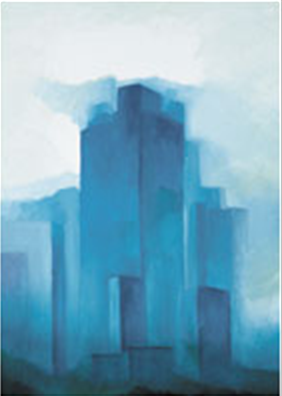Colin David III
This is a collection of articles archived for the excellence of their content. Readers will be able to edit existing articles and post new articles directly |
Colin David III
Unwilling symbol of an ongoing clash By Beena Sarwar
I remember Colin David as an unassuming and quiet artist who only wanted to live life on his own terms, and paint who and what he wanted to. The hooligans who burst into his house on May 22, 1990 to destroy his paintings opposed this right. The incident symbolised the ongoing clash between those who believe in freedom of expression, and those who take it upon themselves to police it. The attack on David’s house and work was not the first of its kind, but it was the most violent and invasive until then — and perhaps since — in Pakistan.
The Zia years had pushed figurative arts and classical dance (never particularly populist forms to begin with) out of the public realm where they had started to emerge. In one incident, vandals attacked Sadequain’s figurative paintings stored in the Freemason bui lding at Regal Chowk, Lahore, one painting. The gentle ‘malang’ was later among those who took the appeasement route, turning to calligraphy. Many others restricted figurative works to sherwani-clad portraits of political personages at official exhibitions. Colin David, a professor at the National College of Arts, continued to paint the human body in his own style of realism, but such works disappeared from the few art galleries that then existed. Some artists defiantly incorporated subversive images into abstract or allegorical works. David’s friend and contemporary A R Nagori metaphorically used animals to convey his message, for example, wolves in uniform. Salima Hashmi integrated nude torsos into landscapes.
After Zia’s death, the right-wing forces that he and his allies had strengthened did their utmost to stabilise a democratically elected government headed by the first Muslim woman prime minister. Other shady forces of the ‘establishment’ assisted them, contributing to the instability that President Ghulam Ishaq Khan used as a pretext to dismiss the PPP government and dissolve the assemblies on August 6, 1990, less than two years after the government was installed, and barely two months after the attack on David’s house.
Zia’s protégé Nawaz Sharif was then chief minister of the Punjab, the repository of Pakistani ‘nationalism’ and ‘ideology’. It was here that the tension was most pronounced between those trying to continue Ziaist ideologies and policies, and those who hoped that with the ‘restoration of democracy’ they could express themselves more freely. It was in this context that David felt emboldened enough to print and distribute invitations to a showing of his work- not a public event but a private reception at his home — including a map with directions that the student activists who invaded his privacy must have found most convenient.
In the three minutes they were there, besides violating the sanctity of his home, the vandals caused tremendous damage, some of it permanent. Armed with hockey sticks, they smashed furniture and potted plants and injured several guests besides David’s son who tried to resist. While leaving, they snatched a guest’s handbag containing her identity card and cash, and smashed the windscreens of vehicles parked outside. They also beat up a chauffeur who didn’t have the keys to a car they wanted to go off in.
As they escaped in a couple of rickshaws, a courageous architecture teacher jumped into her four-wheel drive and chased them, helping the police to arrest a couple. I don’t remember what happened to them later, but I don’t think they were charged or punished by a court of law.
A senior professor at the National College of Arts whom I talked to soon afterwards said that if the vandals found David’s work offensive, they could have gone to court instead of being violent. “We can’t retaliate like that,” he said. “If they beat me, if they kill me, I will not hit back. I can’t. I don’t think like that” (‘Assault on Art: Back to Square One’, The Frontier Post, June 1, 1990). He happened to be the gentle, brilliant Zahoorul Akhlaque, shot dead at his home in Lahore in 1999 along with his daughter Jahanara, the kathak dancer Nahid Siddiqui’s star student. Anwar Saeed, another talented artist, was badly injured in the attack and had to learn to paint left handed.
This assailant was apparently driven by personal motives of jealousy, rather than self-righteousness against the art forms of his victims. But what he had in common with the hooligans who attacked David’s house was the assurance that he would ‘get away with it’.

